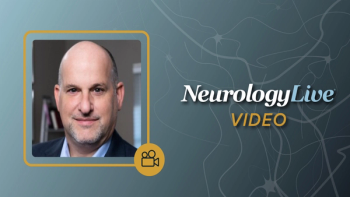
FDA Approves Vivistim VNS System for Ischemic Stroke Motor Deficits
MicroTransponder’s system is the first of its kind to be granted this indication, after supporting data from the VNS-REHAB trial suggested its efficacy in improving FMA-UE scores.
The FDA has approved the use of MicroTransponder’s Vivistim Paired Vagus Nerve Stimulation (VNS) System for the treatment of moderate to severe upper extremity motor deficits associated with chronic ischemic stroke. The system is the first of its kind to receive this indication.1
The agency decision was made based on support from
The mean Fugl-Meyer Assessment-Upper Extremity (FMA-UE) score increased by 5.0 points (standard deviation [SD], 4.4) in the VNS group on the first day after the completion of in-clinic therapy compared to 2.4 (SD, 3.8) points in the control group (between-group difference, 2.6 [95% CI, 1.0-4.2]; P = .0014).2 Additionally, 47.2% of those in the treatment group saw an improvement of 6 or more points in the FMA-UE score 90 days post-therapy as compared with 23.6% in the control group (between-group difference, 23.6% [95% CI, 6-41]; P = .0098).1,2
"People who have lost mobility in their hands and arms due to ischemic stroke are often limited in their treatment options for regaining motor function," Christopher M. Loftus, MD, acting director, Center for Devices and Radiological Health's Office of Neurological and Physical Medicine Devices, FDA, said in a statement.1 "Today's approval of the Vivistim Paired VNS System offers the first stroke rehabilitation option using vagus nerve stimulation. Used alongside rehabilitative exercise, this device may offer benefit to those who have lost function in their upper limbs due to ischemic stroke."
READ MORE:
Adverse events (AEs) included dysphonia, bruising, falling, general hoarseness, general pain, hoarseness after surgery, low mood, muscle pain, fracture, headache, rash, dizziness, throat irritation, urinary tract infection, and fatigue. At least 1 AE occurred in 81% (43 of 51) and 76% (42 of 55) of patients in the VNS and control groups, respectively. There were 3 serious AEs in 2 (4%) participants in the VNS group (1 each of urinary tract infection, hyponatremia, and insomnia), and 2 severe AEs in 2 (4%) participants in the control group (1 headache and 1 syncope). No deaths were reported and none of the serious AEs were related to treatment device.1,2
"This [was] the first study to find clinically and statistically significant effects of a neuromodulation therapy for people with arm and hand weakness after chronic stroke,” Jesse Dawson, MD, BSc, professor of stroke medicine, University of Glasgow, said in a statement at the time of data publication from VNS-REHAB.3 “We saw improvement for the VNS group in both impairment and functional measures compared to controls. In particular, the clinically meaningful response rate doubled with paired VNS for both impairment and functional outcomes.”
The World Motor Function Test (WMFT)-Functional score was significantly increased in the VNS group compared with the control group at 90 days after the end of in-clinic therapy (0.5 [SD, 0.4] vs 0.2 [SD, 0.3]; between group difference, 0.30 [95% CI, 0.16-0.43]; P <.0001). In a post-hoc analysis, 30 of 53 (57%) of participants in the VNS group achieved a clinically meaningful response on the WMFT-Functional rest compared to 12 of 55 (22%) patients in the control group (P <.0001).2
The Vivistim System features an implantable pulse generator (IPG) that is placed just under the skin in the chest of the patient. Attached to the IPG is a lead wire that leads up to the electrodes placed on the left side of the neck.
The FDA noted specifically that the Vivistim System is not indicated for use in patients with vagotomy, and that patients should discuss prior medical history of other concurrent forms of brain stimulation; diathermy treatment; depression or suicidality; schizophrenia, schizoaffective disorder, or delusional disorders; rapid cycling bipolar disorder; previous brain surgery or central nervous system injury; progressive neurological diseases; cardiac abnormalities; dysautonomias; respiratory diseases or disorders; ulcers; vasovagal syncope; and pre-existing hoarseness.1
REFERENCES
1. FDA Approves First-of-Its-Kind Stroke Rehabilitation System. News release. FDA. August 27, 2021. Accessed August 27, 2021. https://www.prnewswire.com/news-releases/fda-approves-first-of-its-kind-stroke-rehabilitation-system-301364373.html
2. Dawson J, Liu CY, Francisco GE, et al. Vagus nerve stimulation paired with rehabilitation for upper limb motor function after ischemic stroke (VNS-REHAB): a randomized, blinded, pivotal, device trial. Lancet Neurol. 2021;397(10284):1545-1553. doi: 10.1016/S0140-6736(21)00475-X
3. Positive stroke rehabilitation clinical trial results for the Vivistim Paired VNS System published in The Lancet. News release. MicroTransponder. April 22, 2021. Accessed August 27, 2021. https://www.prnewswire.com/news-releases/positive-stroke-rehabilitation-clinical-trial-results-for-the-vivistim-paired-vns-system-published-in-the-lancet-301275565.html
Newsletter
Keep your finger on the pulse of neurology—subscribe to NeurologyLive for expert interviews, new data, and breakthrough treatment updates.



























